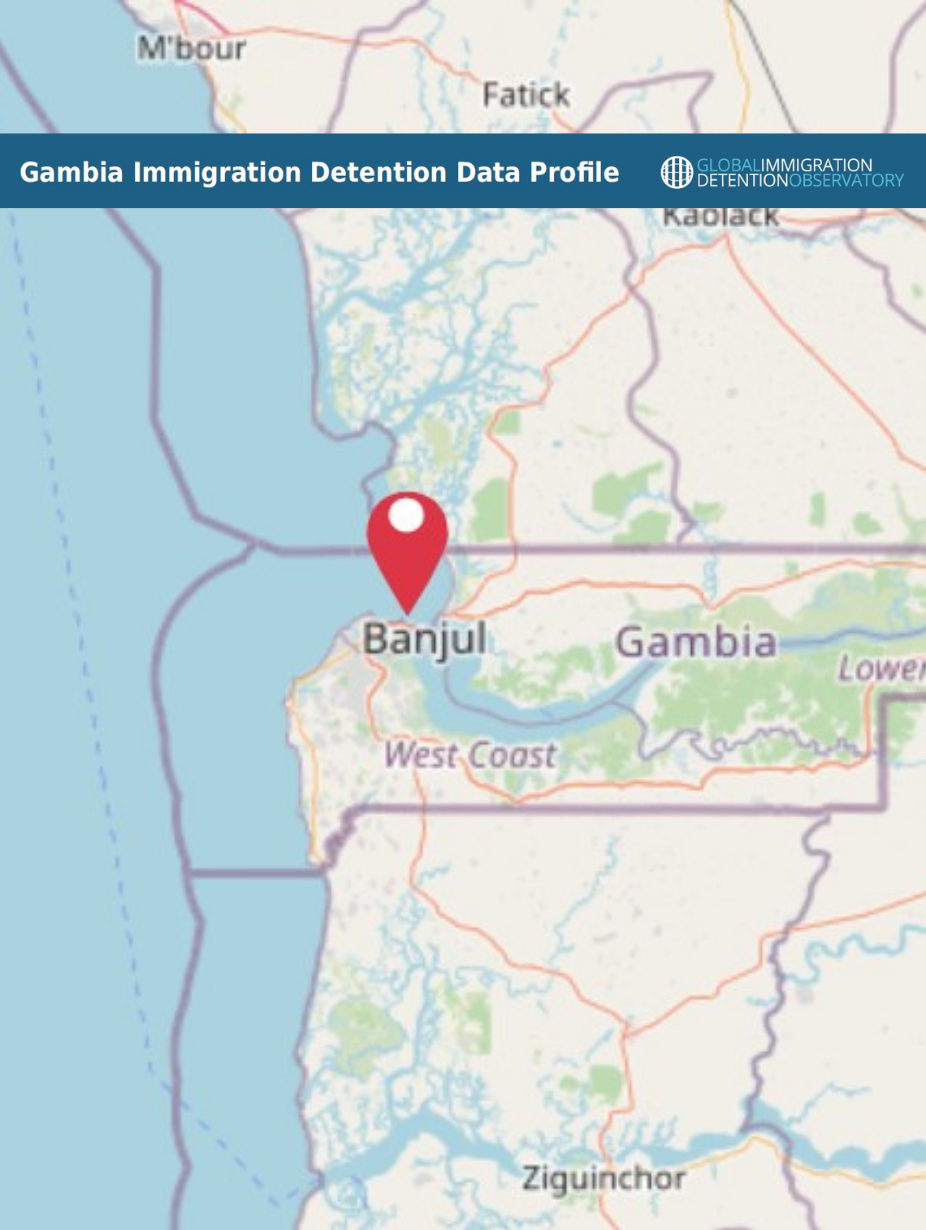In mid-October, the Gambian government relaxed various COVID-19 restrictions on travel and public gatherings in the run up to its tourism season. The country declared its markets opened, waiving a two-week mandatory quarantine imposed on people arriving in the country. However, travelers are required to show evidence of negative polymerase chain reaction test results conducted […]
Last updated:
DETENTION CAPACITY
ALTERNATIVES TO DETENTION
ADDITIONAL ENFORCEMENT DATA
PRISON DATA
POPULATION DATA
LEGAL & REGULATORY FRAMEWORK
Does the Country Have Specific Laws that Provide for Migration-Related Detention?
Detention-Related Legislation
GROUNDS FOR DETENTION
LENGTH OF DETENTION
PROCEDURAL STANDARDS & SAFEGUARDS
COSTS & OUTSOURCING
COVID-19 DATA
TRANSPARENCY
MONITORING
NATIONAL HUMAN RIGHTS MONITORING BODIES
NATIONAL PREVENTIVE MECHANISMS (OPTIONAL PROTOCOL TO UN CONVENTION AGAINST TORTURE)
NON-GOVERNMENTAL ORGANISATIONS (NGOS)
GOVERNMENTAL MONITORING BODIES
INTERNATIONAL DETENTION MONITORING
INTERNATIONAL TREATIES & TREATY BODIES
International Treaties Ratified
Ratio of relevant international treaties ratified
Relevant Recommendations or Observations Issued by Treaty Bodies
> UN Special Procedures
> UN Universal Periodic Review
REGIONAL HUMAN RIGHTS MECHANISMS
Regional Legal Instruments
HEALTH CARE PROVISION
HEALTH IMPACTS
COVID-19
Country Updates
Government Agencies
Ministry of Justice: https://www.moj.gm/
International Organisations
UNHCR Gambia: http://www.unhcr.org/gambia.html
IOM Gambia: http://www.iom.int/countries/gambia
NGO & Research Institutions
African Center for Democracy and Human Rights Studies: http://www.acdhrs.org
Caritas Gambia - https://caritas-africa.org/en/caritas-gambia/




